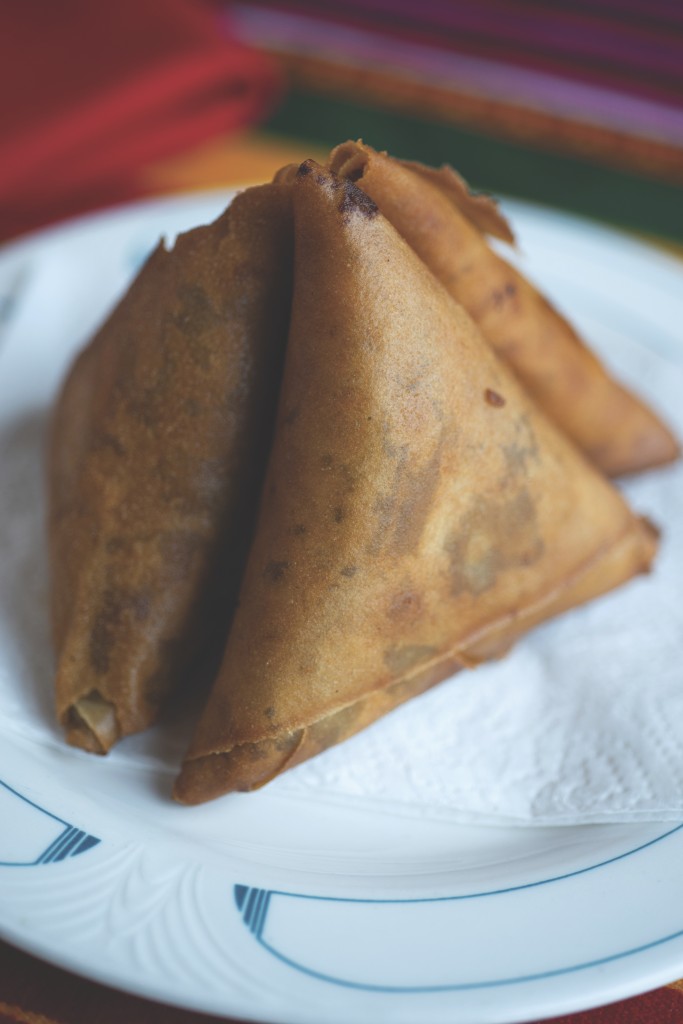Abyssinia Restaurant
1657 Mount Hope Avenue, Rochester
262-3910
Ethiopian cuisine is not exactly America’s first choice for dining out. When suggesting it as an option, I have heard a range of responses from a surprised “We have an Ethiopian restaurant in Rochester?” to a less friendly “Uhh … what do they even eat there?” (Answer: The cuisine features familiar proteins [e.g.,x chicken, beef, and lamb] and a plethora of lentils/vegetables). Ethiopian cuisine is not as “off the beaten path” as it is often perceived. If you have enjoyed Mexican or Indian food, you will find that some of the same spices are used here.
Rochester is fortunate enough to have more than one Ethiopian restaurant. Abyssinia was one of the first Ethiopian places to open in Rochester and is still here decades later. In a city where restaurants open and close within weeks, their longevity alone speaks to their quality.
While appetizers are not a common part of the cuisine, Abyssinia does offer some, to cater to their Rochester audience. Start with a crowd pleaser—the sambusa. It is a deep-fried thin wrapper filled with mildly spiced beef (they also offer two vegetarian versions: lentils or vegetables). If you like fried dumplings, samosas, curry puffs, or empanadas, you will enjoy this classic combination of spiced meat and crispy shell.
All of the main dishes at Abyssinia are accompanied by the classic Ethiopian flatbread—injera. It is slightly sour and a bit springy. The various stews are served atop a large injera. Rolls of fluffy warm injera are served on the side. Traditionally, one would use one’s hand to tear a piece of injera and use it to scoop the stews, but Abyssinia does offer silverware for those who would prefer to enjoy the food the Western way.
My favorite dish at Abyssinia is one that I always advise my meat-eating friends to start with: Tibs wet. Cubes of beef are cooked slowly with onions, garlic, and berbere (a uniquely Ethiopian spice blend that features ginger, chilis, cinnamon, garlic, fenugreek, and more). The beef is tender and falls apart easily. The sauce is medium-spicy, warm, and earthy. When combined with the sour note from the injera, it is (as a famous Food Network chef once said) “a ride to Flavortown.”
If you like to experience life on the mild side, try the dishes described with the term alicha. The protein is sauteed with onions, garlic, and a very turmeric-forward sauce. You can order chicken (doro), beef, or lamb (yebeg) prepared in this style. The stew ends up tasting like a mild curry. It is every bit as delicious as the spicier Tibs wet. Poorly put, it is a more leisurely stroll through Flavortown.
The chicken used at Abyssinia is usually drumsticks (bone-in). This lends depth to the resulting stews. If you would prefer your chicken boneless, try the doro tibs. Boneless, skinless chicken breast is cut up and sauteed in a rich, berbere-based sauce. What it may lack from the depth of being slow-cooked, it makes up for in heat and spices.
Should you want to venture into the truly adventurous aspects of Ethiopian cuisine—order the dulete kitfo: minced beef with garlic and jalapeño, traditionally served raw. Gored gored is similar but features raw cubes of beef tossed with spiced Ethiopian butter (niter kibbeh) and spicy chilli powder (mitmita). However, you can request to have it cooked partially or fully.
Abyssinia has a sizable vegan menu section. The dishes are incidentally vegan partially due to certain religions in Ethiopia that have fasting periods where one is advised to abstain from animal products. It is hard to pick just one vegan dish to enjoy, so I suggest trying the beyaynetu: a sampler where you can choose up to five vegan dishes. Try the shiro wet: chickpeas ground to a flour and then seasoned heavily with onions, garlic, and berbere. It is a creamy and spicy stew that you may end up craving often. The tikil gomen is a gently spiced sauté of cabbage. The yatakilt we’t is mainly made up of American staple vegetables carrots and potatoes combined with string beans and turmeric. Kik alicha may remind you of a more robust Indian-spiced lentil soup. There are many more vegan dishes on the menu, and you will have a tough time picking just five.
No matter what stew you order—don’t forget to get the sole salad on the menu. Timtim salata features tomatoes, onions, and peppers tossed in a citrusy and light dressing. It sounds simple, but it is the refreshing and tangy bite you will need in between mouthfuls of piquant stews of chicken, beef, lamb, or lentils. If you are concerned about your order being too spicy, get a side of the ayibe. Similar to feta in flavor and texture, it will provide cooling relief from some of the spicier food on Abyssinia’s menu. If you are concerned about your order being too mild, we should be friends. In addition, you should order the awaze: a spicy dipping sauce with a ton of berbere.
The best way to experience the food at Abyssinia is to pick two or three of your friends who you don’t mind breaking bread (or injera) with. Abyssinia offers some combos where you can order a selection of dishes to share with your dining companions on a large platter. It is one more bonding activity to add to your list of activities to try post-COVID.
Ethiopia is where the coffee plant originates. So, it is no surprise that coffee is an integral part of the Ethiopian diet. Pre-COVID, Abyssinia offered a coffee ceremony where coffee was prepared in front of the diners. At the end of your meal here, you will be glad for the extra boost of delicious caffeine to lift you out of the stew and injera stupor.
Next time you are looking to order from somewhere that’s not on your usual list of restaurants, try Abyssinia for the perfect balance of familiar and new.






